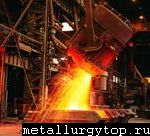Industrial Furnaces
 Among early civilizations, Indus Valley excavations reveal the use of big furnaces matching contemporary civilizations. From then on, by constant endeavors and innovations great strides in design developments have taken place in industrial furnaces. Specialization has peaked resulting in variety of furnaces. There is a furnace for every specific requirement today.
Among early civilizations, Indus Valley excavations reveal the use of big furnaces matching contemporary civilizations. From then on, by constant endeavors and innovations great strides in design developments have taken place in industrial furnaces. Specialization has peaked resulting in variety of furnaces. There is a furnace for every specific requirement today.
Ore extraction required furnaces in huge volumes to separate the metal from the raw material. The branch of chemistry Metallurgy with the aid of physicists and mechanical engineers evolved metallurgical furnaces for smelting and other processes. Bessemer, reverberatory, rotary, induction etc. are jut few names in furnaces that find use in metallurgy. All metallurgical furnaces are designed for extreme heat and high temperature applications.
Again, in metallurgy diversified requirements demanded different designs in furnaces. For example, the aluminum–melting furnace was different from the iron and steel furnace depending upon the temperature requirement of the end metal and the raw material ore, contaminated with different metals and impurities. Importance is location centered in designing the furnace because the availability of fuel also should be considered. A furnace that is located in coalfield can very well use the coal, as its fuel and the designer will have to focus this point. Where brazing is regularly done brazing furnace is used, either electrically heated or fluid fired. In foundry industry, rotary furnace is employed, as this is more suitable with sophistication and controls.
When the material behaviors in the industrial furnaces are to be studied, a miniature, with all the features of the original is essential in the laboratory. This laboratory furnace is also to help upgrade the design of the furnace itself. These not only helps to develop the product quality but also aids innovative improvement in furnace redesign and create better controls and safeties. These furnaces serve to provide heat for the processing at the same time fulfilling the need of a reactor. Though there is lot of design variations in these furnaces, all of them work for one main purpose that is to produce and provide process heat.
Irrespective of the application, all furnaces have the same basic features and mechanisms. Fuel is injected into the processing chamber in a form that makes air fuel mixture for optimum heat production at critical conditions, with the exception of electrical furnace, where heating is by direct arc or induction as the case is. From the outgoing flue gases as much of process heat is recovered and used in some application in the shop floor before letting them out through the chimney.
Incinerating furnace differs in one aspect as it is employed to destroy or burn out things that are to be dispensed, unlike other industrial furnaces that are employed in production assignments. Because of the size and volume, handling this is classified as industrial furnace. Otherwise, the principle employed is same as in the industrial furnaces. These types find the application mostly in crematoriums where high–rise chimney is installed to dissipate the smell while burning.
Furnaces are power packed amazing equipments. The art of harnessing the power to the requirement is the ability to derive optimum benefits will be efficiency of the operator.





Адрес заметки: http://metallurgytop.ru/post_1228222534.php
Рейтинг популярности - на эти заметки чаще ссылаются:
- 43 Герой социалистического труда
- 42 Известный телеведущий целую неделю снимал о Южном Урале
- 41 Первый чугун на каменном угле
- 39 Механизация очистки горновых канав
- 38 Замена конвейерных лент
- 36 Отработка верхнего шлака
- 34 Безотходное производство чугуна
- 33 Металлургия России: всем выйти из кризиса Читать полностью:
- 33 Ремонты чугунных и шлаковых канав
- 33 Системы программного управления